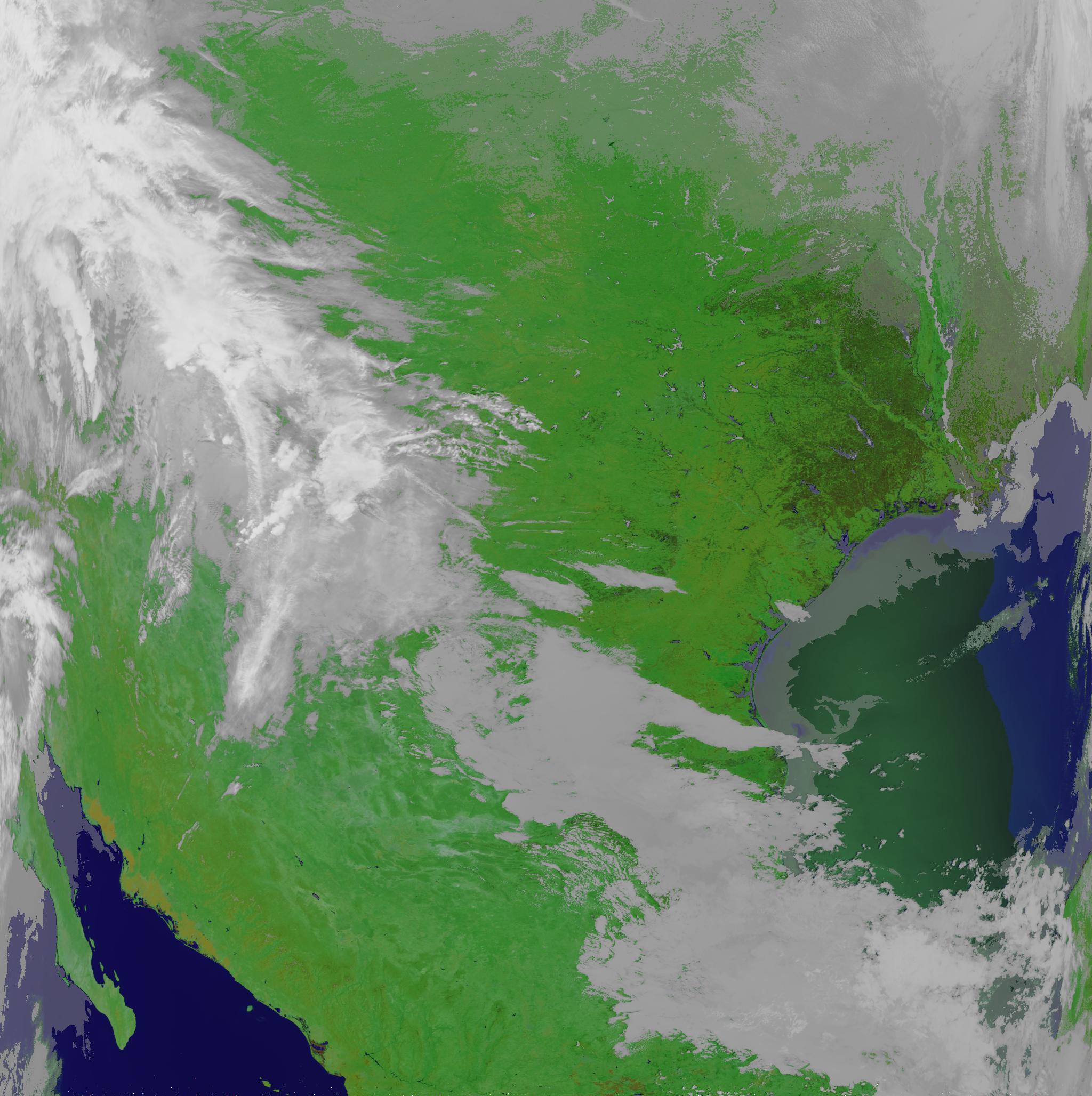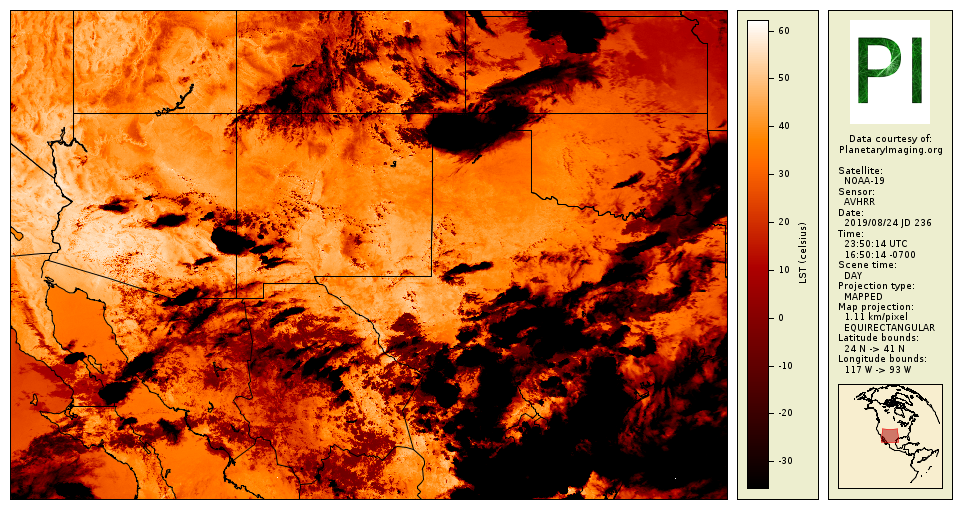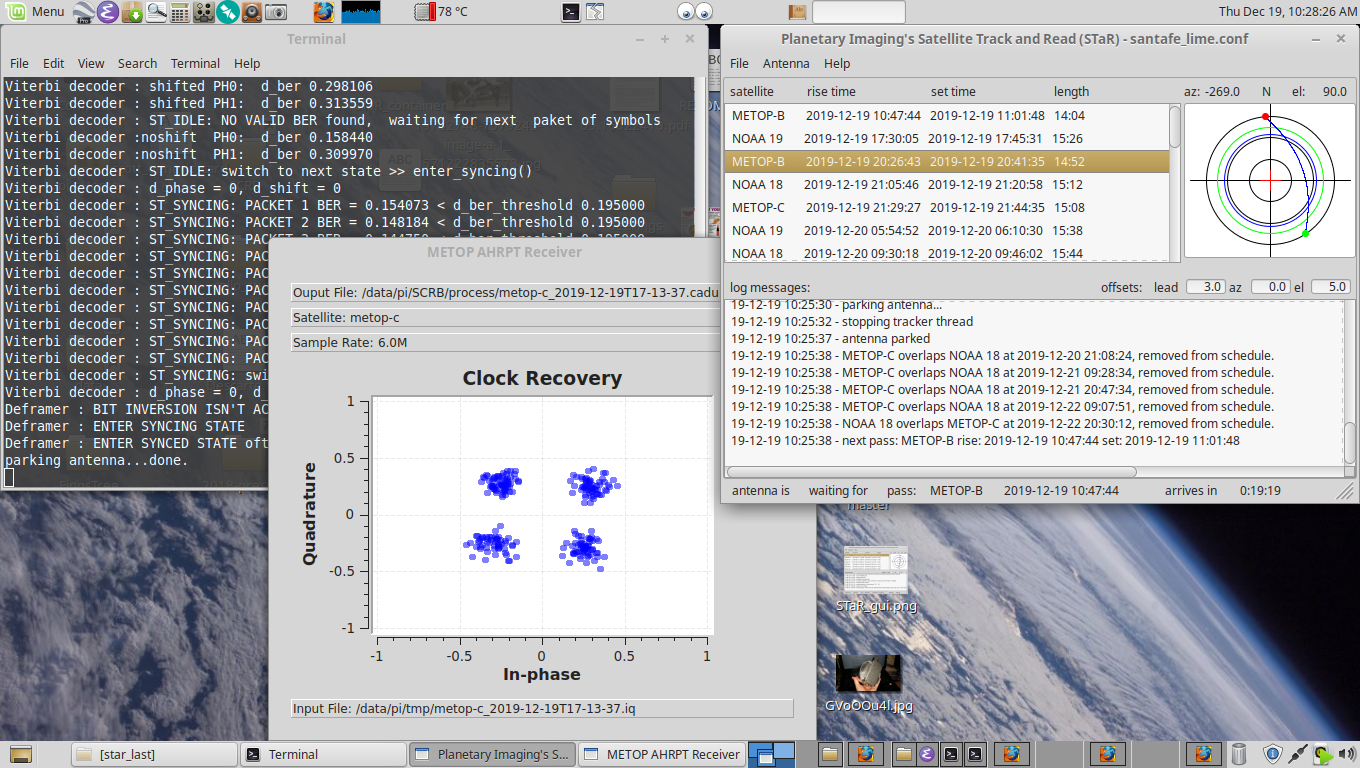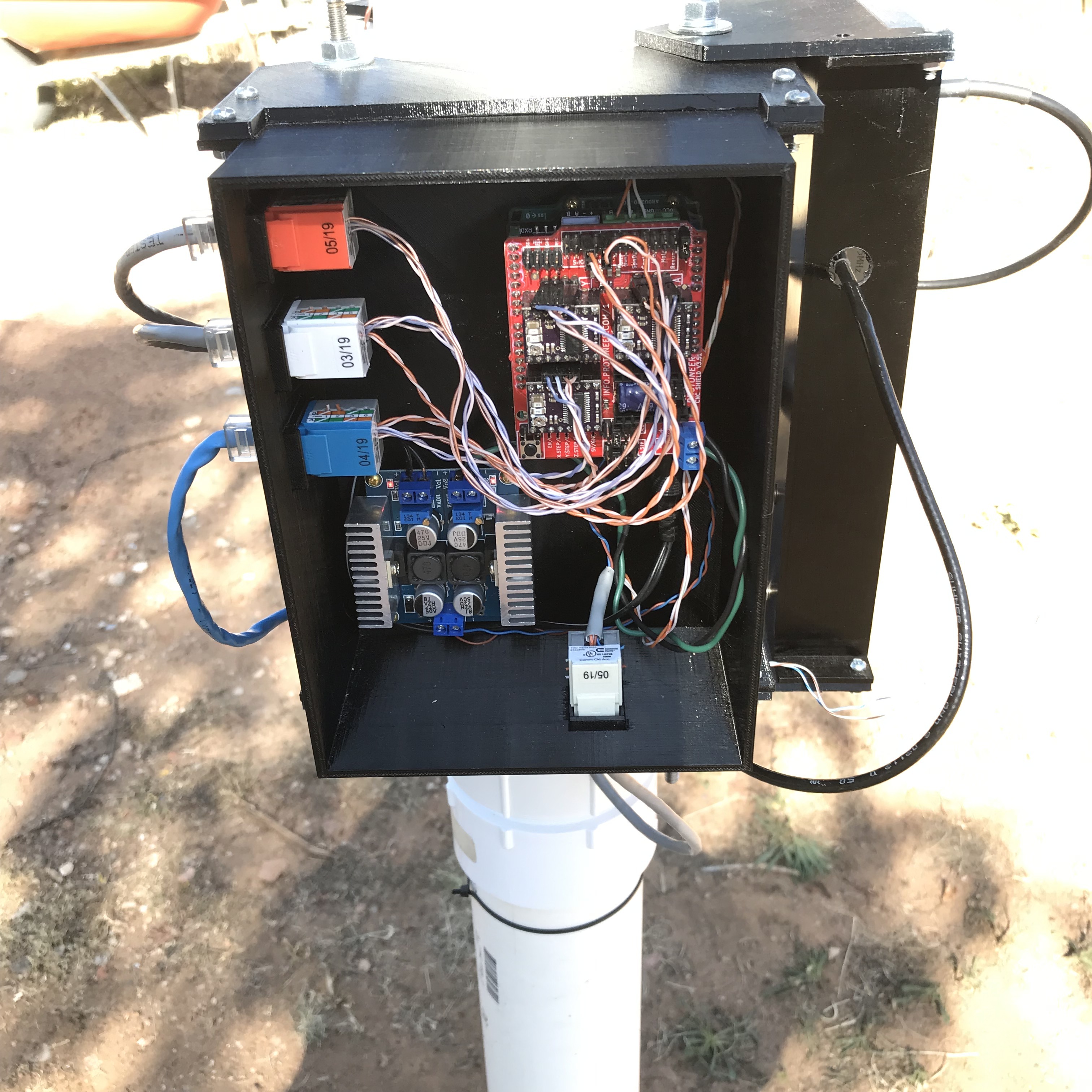PlanetaryImaging.org: An open resource for weather satellite tracking, reception, and applications.
This website aims to integrate in-house and third-party open-source applications which capture remote sensing data from earth observation satellites.
Example AVHRR Images
Metop C, 2019-03-21, Las Cruces, NM, Ground Station




(from STaR acquisition and AAPP/Polar2Grid Processing)
NOAA 19, 2019-08-24, Santa Fe, NM, Ground Station




(from STaR acquisition, HRPT/CoastWatch and Polar2Grid Processing)
Our emphasis is educational and the platforms can be used by researchers and hobbyist alike due to the low-cost, yet effective, approach. However, it should be noted that the data from satellites read by our platforms are available through official space agencies sites (NOAA,NASA,ESA,etc.) and those should be used for scientific purposes. Products derived from our applications have not been validated (yet) by the science community and users should use them with caution and at their own risks.
These platforms (software/hardware) are meant for practical instruction, ranging from motion control to visualization. Please refer to our Wiki and GitLab for current software (and future hardware) packages.
Follow the links on the left navigation bar to download applications and recent images and data. This is a work in progress...please revisit this site to find new code, wiki pages, etc.
Contact scott at planetaryimaging.org if you are interested in contributing.
Recent News:
2020-01-01 PlanetaryImaging.org Launches Site
This web site initiates with the STaR, (Satellite Track and Read) package which is a GnuLinux/Python platform for tracking and reading polar orbiting satellites using a modular rig and signal processing approach. A prototype antenna rig is also presented.




STaR currently reads NOAA-18, 19, METOP-A,B,C satellites using GNUradio software, Software Defined Receivers (SDRs), and a "maker" antenna rig with Arduino/GRBL motion control. In our case, "maker" refers to a possible combination of hand-made feeds, off-the-shelf (OTF) hardware parts, 3D-printed components, low-cost (yet acceptable) electronics and sometimes scavanged parts when available.




The above images show a prototype rig using a flat multi-patch antenna. (Small prime/side focus antennae are also being considered for this rig.) Parts include PVC pipes, PVC toilet floor flanges, threaded rods, ball bearings, 3-D printed parts, and OTF/scavenged electronics. 3-D printed parts are in black (eg. supports, bearing, sprockets).
Our modular approach lends itself to expansion in both rig control and satellite reception. The intent is to expand the reception suite to include current Meteor and FengYun satellites, and to look ahead toward the Suomi class (JPSS) satellites. Geostationary reception will also be a focus.
Stayed tuned to the GitLab and Wiki pages for updated code, parts list, instructions, and OpenScad files.